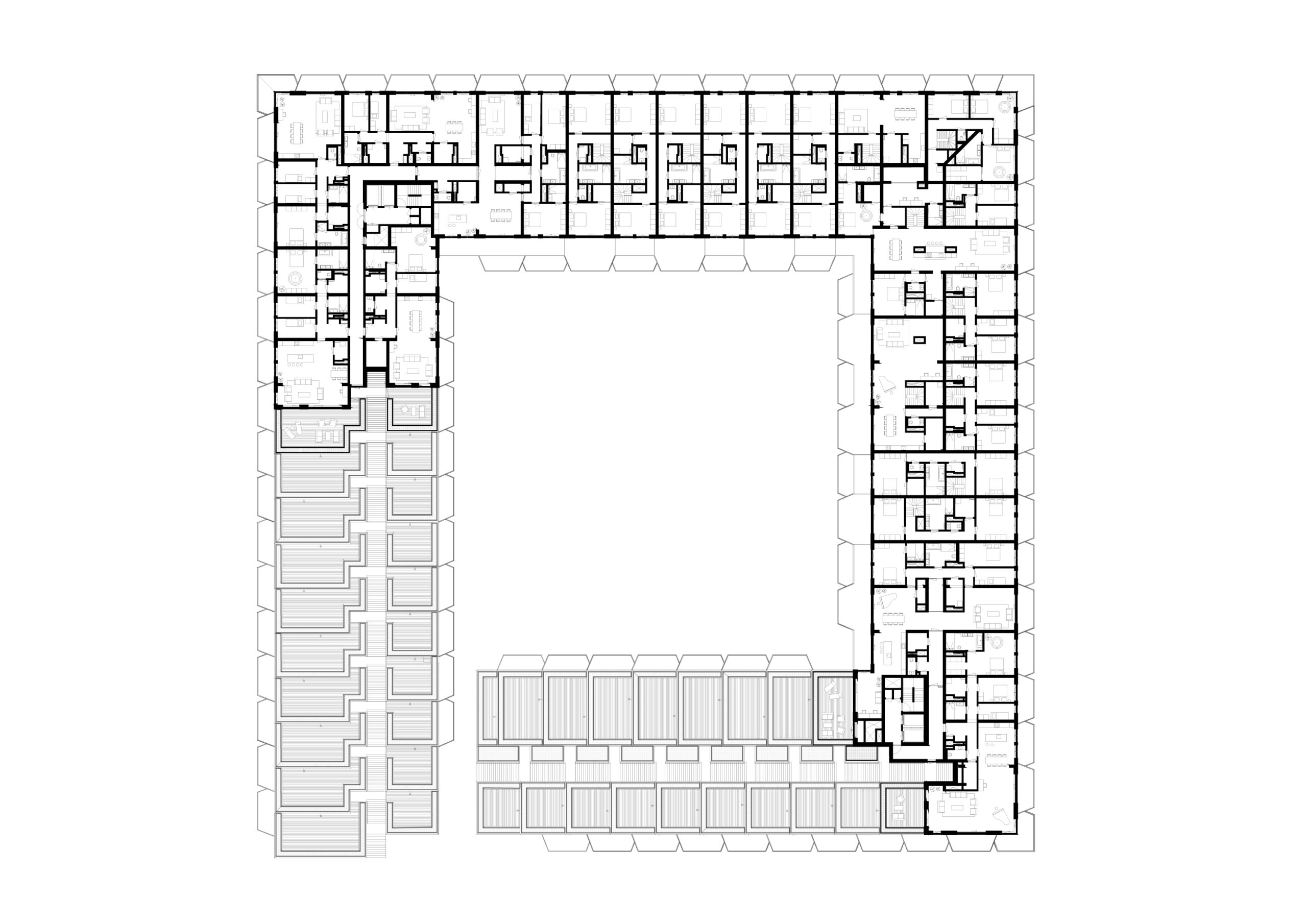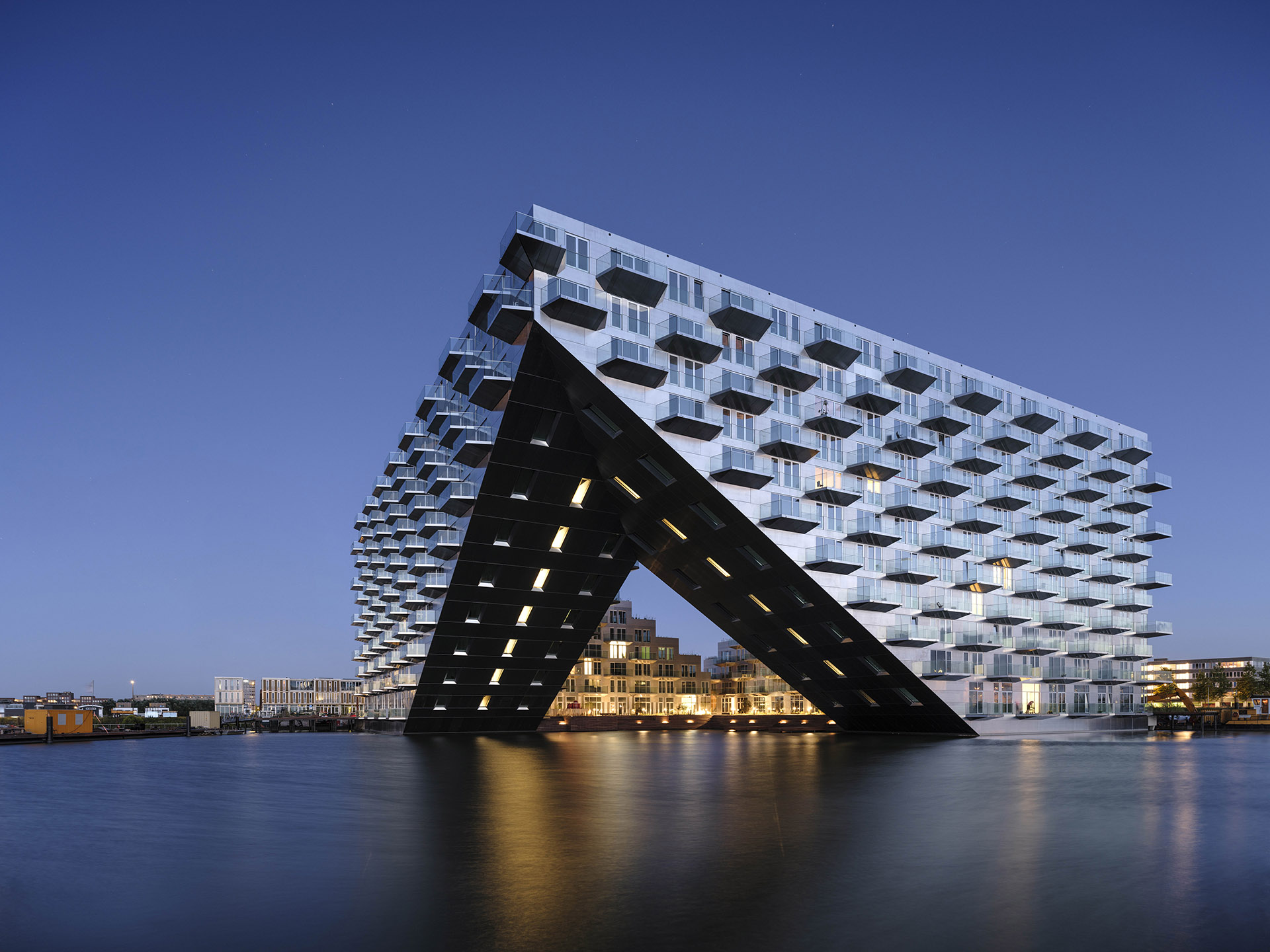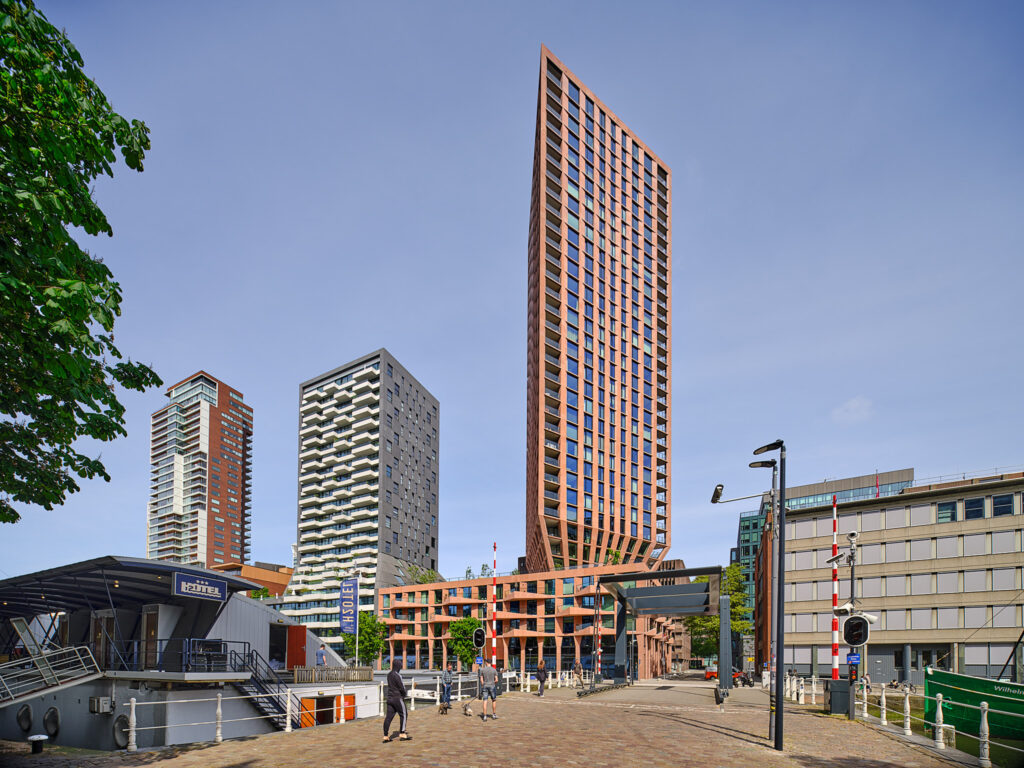SLUISHUIS
At the place where urban, rural areas and water meet in Amsterdam IJburg, Sluishuis has been realised: the iconic housing project designed by Bjarke Ingels Group (BIG) and Barcode Architects, and developed and built by VORM, BESIX Real Estate Development and BESIX Nederland.
Location
Amsterdam, the Netherlands
Client // Contractor
BESIX RED, VORM // Building consortium BESIX Nederland/VORM
Year
2016 - 2022
Status
Realised
Size
49.000m²
Category
Residential
Collaborators
BIG - Bjarke Ingels Group, BIG Landscape architecture, Van Rossum (structural engineer), Buro Bouwfysica (building physics), Klimaatgarant (sustainability), DWA
Photography:
Hans Wilschut, Ossip van Duivenbode
Team
Dirk Peters, Robbert Peters, Hans van Pelt, Robertus de Bruin, Danielle MacLeod, Jakub Pakos, Cristobal Middleton, Mojca Bek, Emiliya Stancheva, Egidijus Kasakaitis, Joran Velsink, Christian Meezen, Pietro Maccioni, Maxwell Abubakar, Joshua Coster, Meghan Dalton, Lucas Vinke, Agata Majchierska, Martina Ciccolari, Michele Cherubini


Sluishuis is a contemporary translation of the typology of the Amsterdam building block that responds specifically to its special location in the water. The volume is elevated on one side to allow the water into the courtyard and stepped down on the other side to make an inviting gesture towards IJburg with friendly green terraces.
From every angle, you experience the Sluishuis volume differently. Whether you are standing on the dyke, motorway or bridge, walking across the jetties or public route over the roof, or even viewing the building from the air: Sluishuis knows how to surprise you from all sides.
Dirk Peters, founder
"With iconic architecture and new residential typologies, high-quality outdoor spaces and breathtaking views of the IJmeer, Sluishuis is a new landmark for IJburg and Amsterdam."


The residential programme consists of 442 apartments. Rental and owner-occupied homes alternate throughout the building and provide space for various target groups, income levels and age categories. All apartments are accessible via the central courtyard. There, the cantilever and the water welcome you to the building. Each home has optimal views and daylight thanks to the special shape of Sluishuis with its double-cut volume.
Sluishuis has a rich diversity of housing typologies, such as compact urban studios and water sports apartments. On the top two floors are duplex penthouses with both a relationship with the courtyard and a view over the IJmeer. Premium flats with luxurious and sunny wooden roof terraces with views over IJburg are located on the stepped part. Extra special are the apartments at the bottom of the cantilever, with stunning views over the IJ and directly on the water. What makes these apartments so unique is that they hang over the water and in the part of the floor that runs along with the sloping façade, there is a large window through which you can see the boats sail right underneath you.



The plinth will accommodate a varied programme including a sailing school, water sports centre and restaurant with a spacious terrace in the sun. Residents and visitors enter through the courtyard. The walkway to the roof of Sluishuis offers visitors and residents a spectacular view of the water and the neighbourhood. There is also a jetty promenade with 34 houseboats around the building. The jetty landscape stimulates contact with the water with various mooring places, sitting decks, and floating gardens. The carefully designed landscape also stimulates flora and fauna with local plant species and a bird island. In this way, the plinth and the surrounding landscape form a high-quality addition to the environment.



In its materiality, the building seeks contrast but also a connection with its surroundings. In the material palette, natural materials have been chosen so that the building will have a rich and natural appearance over the years. The abstract, untreated aluminium of the façade reflects the water and gives the volume a different appearance at any time of day. In contrast, the stepped roof terraces and the jetty promenade are made of wood, which gives a tactile appearance.

Sluishuis is one of the most sustainable buildings recently completed. It has an energy performance coefficient (EPC) of -0.02. The building's heating requirements have been minimised by combining excellent insulation techniques, triple glazing and heat recovery from the ventilation systems and showers. The building is heated by a combination of energy-efficient district heating and heat pumps for hot water and cooling. The building's energy consumption for heating, heat pumps, ventilation and LED lighting is fully provided by approximately 2,200 m2 of solar panels. In addition to these technical aspects, a great deal of attention was paid to the greenery and water collection in the development of Sluishuis. At the front, sides and in the courtyard are gardens with local plant species. The greenery runs across the roof terraces upwards in built-in planters. On the roof, this creates a pleasant green atmosphere.
With strong architecture, new housing typologies, high-quality outdoor spaces and a breath-taking view over the IJmeer, Sluishuis forms a welcoming entrance to Amsterdam IJburg.





